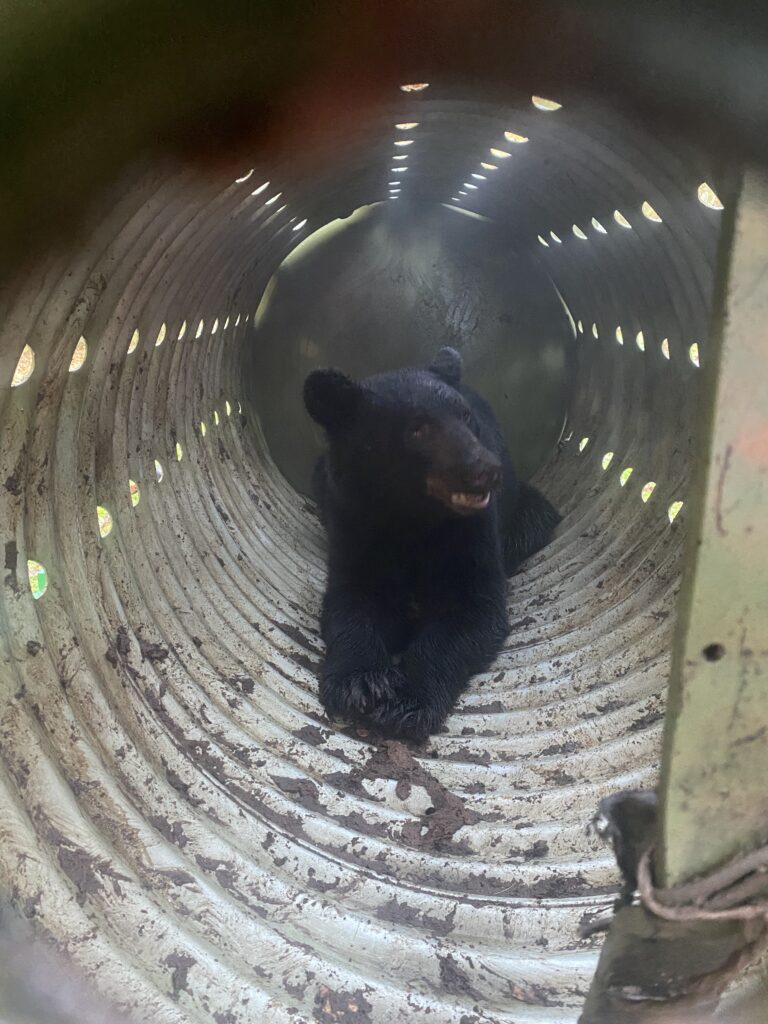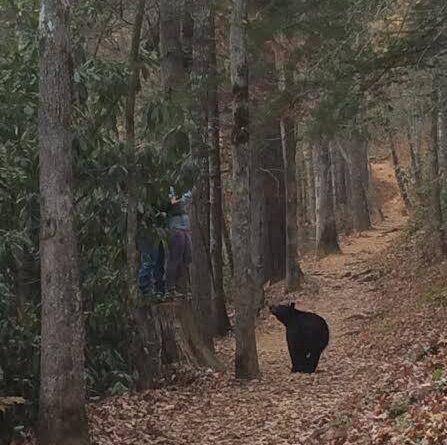Local Legends: Keep our Bears Wild
I’m going to step aside from talking about legends and folklore for this issue. Instead, I want to share something I haven’t been able to stop thinking about for the past two weeks.
At the end of October, I stayed at the Great Smoky Mountains Tremont Institute for their inaugural writers conference. If you’re unfamiliar with the Tremont Institute, it’s an organization based in the Great Smoky Mountains National Park that provides experiential learning to youth and adults. The facilities include a visitor center, activity center (which houses a dining hall), dormitory, platform tent village and several educational buildings, such as a science lab and an outdoor classroom.
On our second morning of the conference, the dining hall was buzzing during breakfast with stories of a young bear prowling around the night before. Apparently, it was pawing at the windows of the staff apartment before trying to gain access to one of the attendees’ tents.
Black bears, by nature, do not want to be around people. They also tend to be crepuscular (active in twilight), rather than nocturnal, so this behavior was out of the ordinary. I have had a few run-ins with bears in the Smoky Mountain National Park myself—I’ve even been bluff-charged by an angry mama bear.
The park rangers brought in a trap and baited it with donuts, and we all waited to see if they would catch the curious bear. During breakfast the following morning, they informed us that the bear had been captured and gave us the option to see the bear before it was relocated. We all poured out of the dining hall and walked over to the staff apartment where the trap had been set.

The bear was young, probably a yearling, according to the ranger. He was huddled in the back of the cylindrical trap and was shivering so severely that the metal trap seemed like it was vibrating. He panted and clacked his teeth. Every once in a while, you could see his little nose inspecting one of the holes in the trap. He seemed so small and vulnerable, backed into a corner.
I asked the ranger what was going to happen to him. She said that when bears have been hanging around humans, they are trapped and tagged. They remove one tooth in order to age the bear, and then the bear is usually relocated to a national forest. Upon release, rangers may use methods such as shouting or firing paintballs to make the bear associate humans with negative experiences.
The ranger explained that relocation was not without risks to the bear, which can be hunted in the national forest or attacked by an already established bear defending its territory. If the bear becomes an aggressive repeat offender, it will likely be euthanized.
This seemed like a pretty grim situation for a bear whose home we were intruding upon, but the truth is, as the most-visited national park in the United States, bears are becoming increasingly habituated to people.
Just the other day, I read in the news that they had to close an area of the Blue Ridge Mountains because of people picking up bear cubs. In Cades Cove, visitors have been fined for feeding bears. Even just hanging around a bear instead of giving them space, as the park suggests to do, can have negative consequences.
As I watched that little yearling bear shake in fear in his metal trap, I wanted to cry. It was so incredibly sad, and I haven’t been able to stop thinking about him. I hope, wherever he is, he is safe.
While we can’t control the actions of others, we can advocate for the bears in our beloved park by spreading awareness, gently letting others know that feeding, picking up or getting close to the bears can have serious implications. Let’s keep our bears wild; it’s the best for them and for us.

